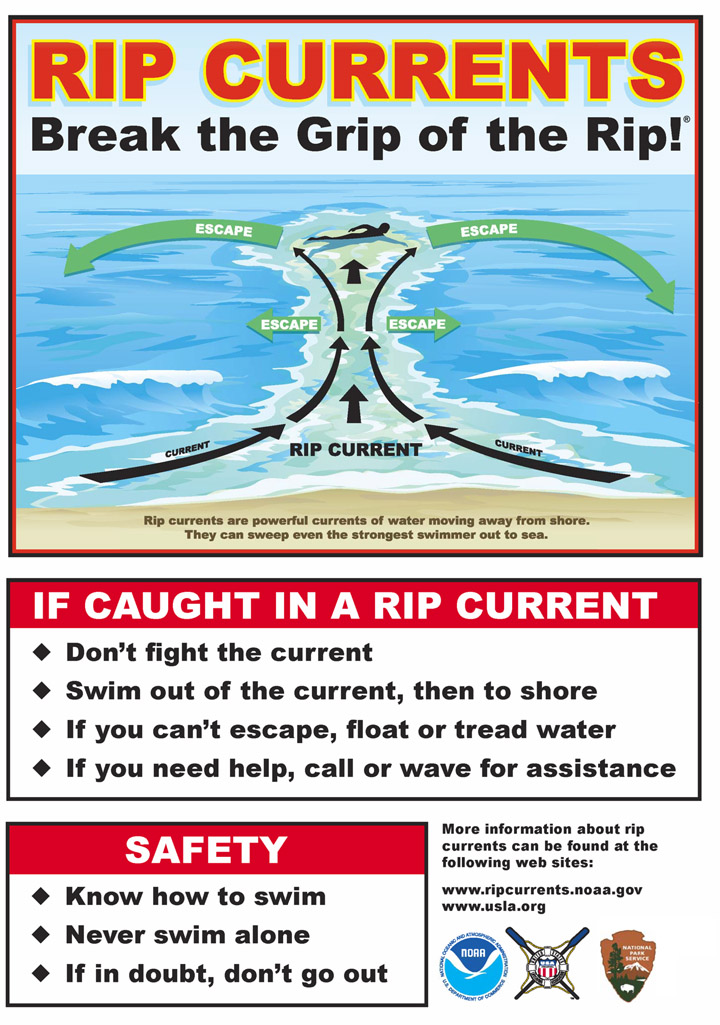Eight fatalities as a result of rip currents were reported in North Carolina in 2013.
To help prevent similar tragedies, National and North Carolina Rip Current Awareness Week runs from June 1-7, educating the public about the strong current moving away from shore.
“In terms of beach safety, it’s a pretty big problem,” said Spencer Rogers, North Carolina Sea Grant coastal construction and erosion specialist. “It does get people in trouble more than anything else.”
The last reported rip current fatalities in Wrightsville Beach occurred on Sept. 28, 2002, when a 21-year-old male and 10-year-old female from Greensboro died.
Steve Pfaff, warning coordination meteorologist with the National Weather Service in Wilmington, said there have been 100 fatalities in the Carolinas dating back to 2000.
Since 2004, more fatality demographics have been reported, allowing for additional research.
“Most are males between the ages of 31 and 50,” Pfaff said.
He said during the last couple of years they have tallied how many fatalities are caused during the attempted rescue of another swimmer caught in the current.
The male demographics also have to do with physical ability, since the men are often not as fit as they were in their teens or 20s.
The people who initially get into trouble with rip currents are poor swimmers, Rogers said.
“If you get caught in a rip current, don’t panic,” Rogers said. “Don’t try to swim against it.”
Rip currents move faster than an Olympic swimmer’s speed, and Rogers recommends swimming on a guarded beach with lifeguards who will help keep the public away from the immediate threat of rip currents.
A 2008 New Hanover County study showed the majority of respondents were aware of rip currents, but only 68 percent knew to swim parallel to the shoreline if caught in a rip current.
While some rip currents are caused by geographic features, others may occur without warning for only a few minutes.
Rip current forecasts are available at www.weather.gov/ilm/BeachRip, along with videos and pictures.
“Just because the weather is nice doesn’t mean that the surf is going to be nice,” Pfaff said.
In July, Rogers will work with Dr. Rob Brander, a coastal processes specialist and associate professor of the University of New South Wales, on a rip currents study using drifters, 3-foot circulation cells that behave like a body in the surf, to track currents.
Scientists have found with the circulation cells, if someone floats instead of swimming there is a pretty good chance of returning to shore.
“The problem is that there could be a 10 or 20 percent chance that you’re going to be sent off into deep water in the ocean and you’re not going to get back,” Rogers said.
email [email protected]




